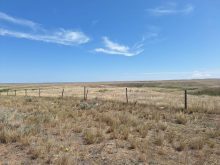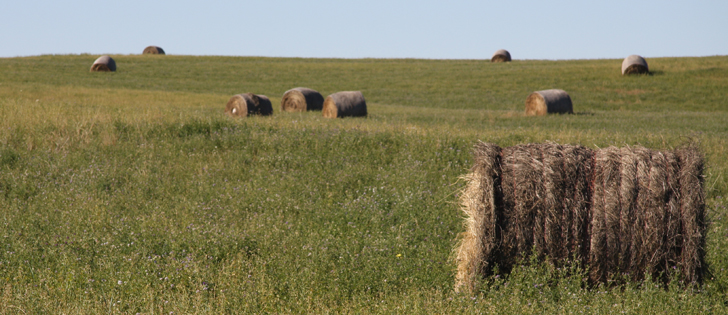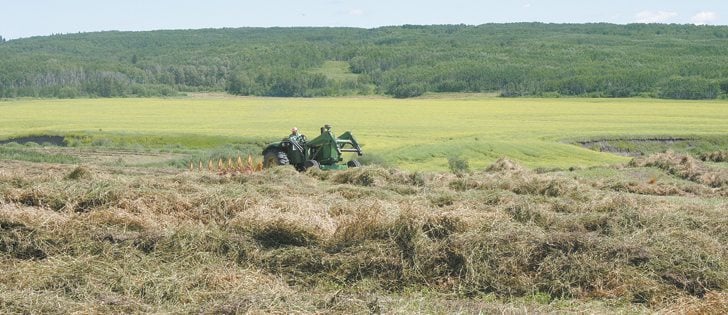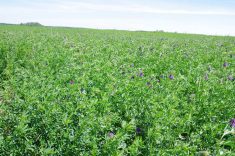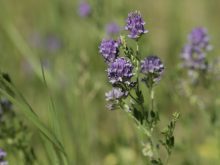Too early for buyers | U.S. producers to wait before making moves north
The drought in the U.S. Midwest has a few producers and hay brokers looking to buy hay in Canada, but there is no rush yet, said an Alberta hay producer.
John Overwater said has had a few inquires, but no commitments for hay sales.
“They’re kicking tires, but not making a commitment,” said Overwater, of Olds.
Callers want to know about the weight of the bales, feed test results, quality and price, but are unwilling to buy hay this early in the season, despite the widespread drought in many American states.
Read Also

Critical growing season is ahead for soybeans
What the weather turns out to be in the United States is going to have a significant impact on Canadian producers’ prices
Many American producers are waiting for their county or state to be declared a disaster area, which would allow them access to interest-free money to offset the cost of transporting hay. Until disaster areas are declared, American producers will make do with feed from areas closer to home.
With high cattle prices, Overwater believes the cattle will be sold before expensive hay is purchased. It will be likely late August or September before the cattle come off pasture and more serious hay calls are received.
“By that time we will have a better scope of the disaster. It will have a size to it and a value to it.”
The biggest concern for Overwater is the small amount of hay baled in Alberta. He estimates only five percent of the hay in the province has been baled.
“The weather is crap. We are trying to put up quality hay, but mother nature is not co-operating,” said Overwater, who aims to get at least 50 percent of their hay crop baled rain free.
With plenty of 2011 carryover hay crop at a reasonable price, Overwater doesn’t know how high this year’s hay prices will reach.
Ed Shaw, of International Quality Forage and Feed, in Carstairs, said he is starting to get a few inquiries for hay, but no sales yet.
“There is a potential for good hay sales, but too early to say what will happen. As time goes on people will be looking for more hay.”
Shaw has fielded a few calls for cattle producers looking for low quality feed that could be ground and used as forage in feedlot rations.
Marc Lavoie of Enterprises Macay of St. Isadore, Alta., said they are too far north to be a realistic option for American cattle producers, but they are getting calls from Japanese and South Korean buyers wanting to be reassured of hay supplies.
“Some are becoming a little anxious,” said Lavoie.
Andreau Bonneau, with Saskatchewan Agriculture, said they have also had a few calls from brokers wanting to line up hay for potential American sales, but until the Canadian hay crop is baled, it’s too early to say if prices will be strong.
“There is a lot of hay still going up,” said Bonneau.
“There will be some quality issues.”
During the 2012 crop year, the USDA has designated 1,369 counties across 31 states as disaster areas.





